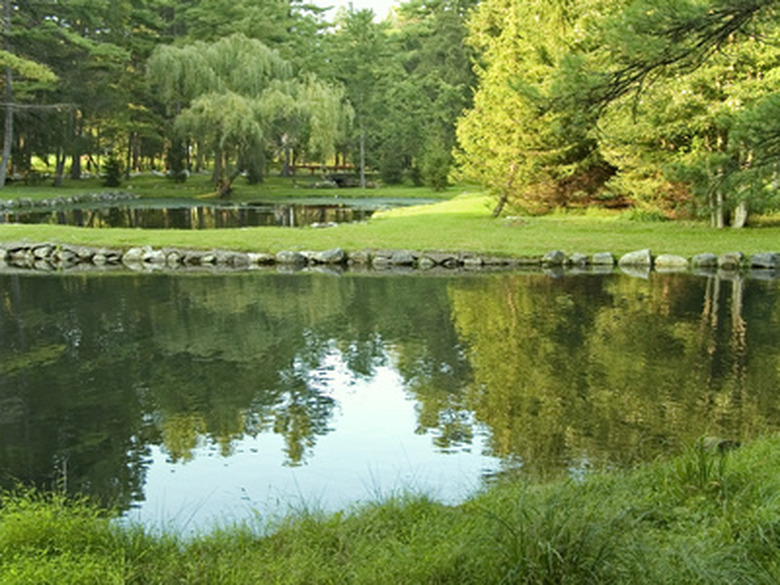Information On Using Pond Water For Plants
Whether natural or man-made, ponds add beauty to a landscape and serve practical purposes, as well. Ponds provide shelter for wildlife and can reduce the amount of water pumped from municipal systems for irrigation. To properly maintain a pond, gardeners should take care to avoid contamination from sump-pumps and to use fertilizers, insecticides and herbicides judiciously.
History
Since man first began cultivating crops 9,000 to 10,000 years ago, finding a reliable source of water has been a critical issue. Building canals and dams in Mesopotamia and Egypt allowed communities to grow crops more reliably, reducing times of famine due to drought. In the U.S., when the early Mormon pioneers reached the Salt Lake Valley in the mid-1800s, the area was a desert. Through a series of constructed canals and ditches, though, the area prospered. Man-made or natural ponds, fed by a nearby stream, provide a similarly effective solution.
- Whether natural or man-made, ponds add beauty to a landscape and serve practical purposes, as well.
Operation
Generally, larger ponds are used for watering plants, as opposed to small garden ponds. These ponds may gain water through rainfall, run-off or tail water from irrigation, or through diverting water from streams during spring thaws. They require a mechanism to deliver water to the garden or field in the form of pumps or a system that employs gravity.
Benefits
For farmers, the benefits of ponds are substantial. Without reserves, farmers may suffer through years of drought and decreased yields. A pond acts as a storage tank, stabilizing water reserves. Ponds also provide water more efficiently and economically than municipal water supplies. For the homeowner with acreage, a strategically placed pond with a pump may provide all, or nearly all, the water needed for landscaping and vegetable gardening purposes.
- Generally, larger ponds are used for watering plants, as opposed to small garden ponds.
- For the homeowner with acreage, a strategically placed pond with a pump may provide all, or nearly all, the water needed for landscaping and vegetable gardening purposes.
Effects on Plants
Ponds are often sources of rich, organic material that provides nutrients for plants. Sometimes, though, pond water is contaminated with disease-causing pathogens and chemicals. Pond water may also have a very high or low pH level, or be high in salt, which can burn plants. When in doubt, gardeners should conduct a water test through the local health department, county extension or a commercial laboratory. If using pond water for irrigating vegetable gardens, gardeners should use irrigation systems, such as drip systems, that don't wet leaves, according to the University of California Davis to minimize the possibility of contaminating produce with pathogens or chemicals.
Considerations
Before installing a pond for the purpose of irrigating plants, you must carefully consider the cost versus the potential benefits. In many states, county governments require a permit before building a pond. Additional agencies, such as the Environmental Protection Agency and the Department of Fish and Game may also have laws concerning the building of ponds. Building and maintaining a pond may cost thousands of dollars. Not all sites are suitable for a pond either. Sandy or highly porous soils will drain too quickly, according to the California Agriculture Water Stewardship Division.
- Ponds are often sources of rich, organic material that provides nutrients for plants.
- If using pond water for irrigating vegetable gardens, gardeners should use irrigation systems, such as drip systems, that don't wet leaves, according to the University of California Davis to minimize the possibility of contaminating produce with pathogens or chemicals.
